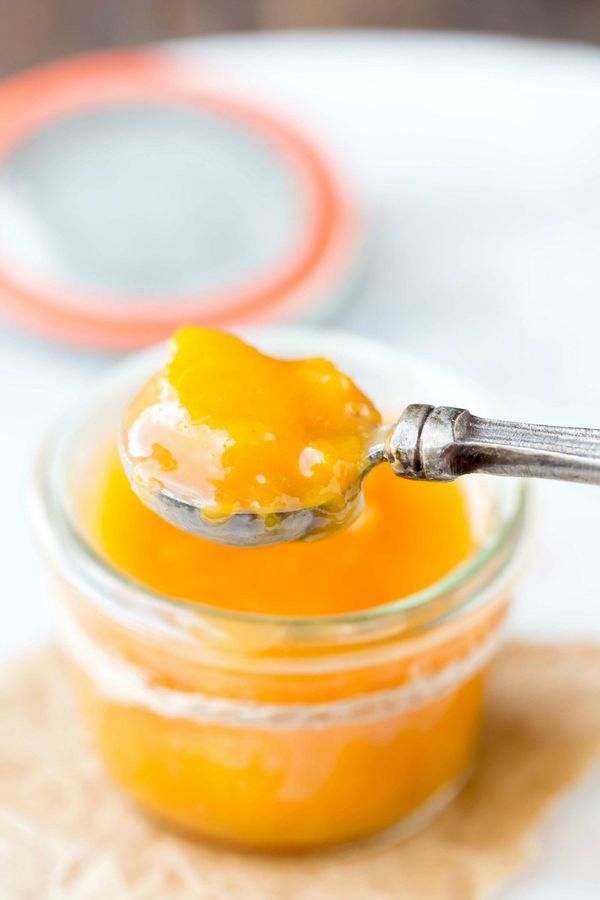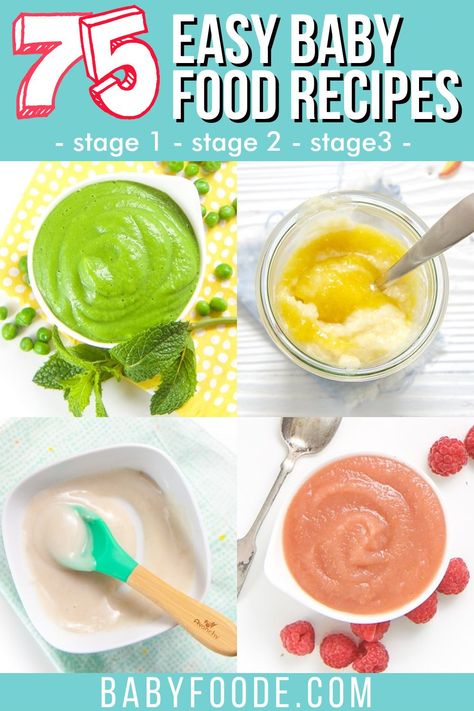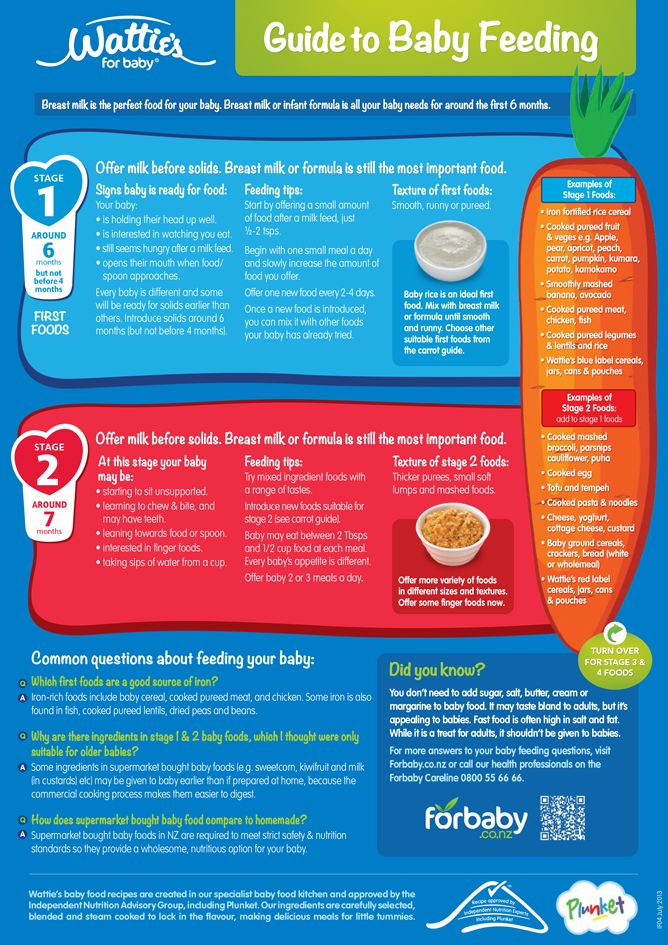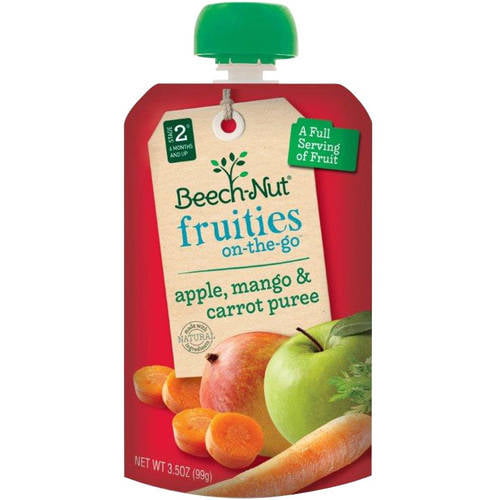How to puree apricots for baby food
Apricot Baby Food
byAmy Palanjian
Updated
This post may contain affiliate links. If you shop from one of our links, we may earn a commission.
Learn how to make easy homemade Apricot Baby Food, with both puree and BLW options. Find storage tips and baby food combinations, too.
Apricot Baby Food
Turning fresh apricots into baby food, whether as a puree or a baby-led weaning food, is easy with this simple method. You can use this as a Stage 1 baby food or as an option for a baby food combination. It’s very versatile!
Follow along below for the full information on making this recipe, with tips, variations, and storage advice.
Ingredients You Need
To make this recipe, you’ll need just a few ingredients. Here’s what to have on hand before you start.
- Apricots: Look for ripe, fresh apricots without blemishes. Apricots can be very, very tart, so the fresher, more local the better.
(This is one circumstance where opting for local fruit, which is more likely to be picked when ripe versus underripe so it can withstand travel, makes a big flavor difference.)
- Unsalted butter: This is used to cook the apricots in a pan, though you can use coconut or avocado oil if you prefer.
Step-by-Step Instructions
Here’s a look at the process for making this baby food. Scroll down to the end of the post for the full information.
- Cut the apricots in half and remove the pit. Cut into lengthwise pieces about 1/2-1 inch thick.
- Warm the butter in a pan to melt. Add the fruit.
- Cook until soft, stirring occasionally. Let cool and serve as a BLW fruit.
- Or, transfer to a blender and blend smooth. Serve or store.
Frequently Asked Questions
Why is my apricot puree so tart?
Apricots are naturally tart, so you may need to add another less tart food, like apple, to balance it.
Can babies eat apricot?
Yes, after 6 months (or whenever baby starts solids), apricots are a nice option for a baby food.
Do you peel apricots for baby food?
No, you don’t have to peel the apricots. The skins blend into the puree very easily.
How do you prepare apricots for baby food?
If your apricots are very ripe and very sweet, you can simply puree the fresh fruit after you remove the pits. If they are not very sweet, which is often the case, it is better to saute them in a pan to caramelize the sugars a little and help the fruit soften. Then you can serve it as a BLW food or blend into a puree.
How to Store Baby Food
You can put leftover or meal-prepped baby food into baby food storage containers or reusable pouches and store in the fridge for 3-5 days. Or, you can also freeze baby food. I prefer to freeze it in ice cube trays, then transfer the frozen cubes to a storage bag to freeze for longer-term storage.
Favorite Baby Food Containers
I love the WeeSprout Jars, Beaba Clip Containers, and Squeasy Gear Pouches for baby food storage. You can find all of my favorite resources for baby food containers for more information.
How to Store
Store the puree or slices in an airtight container in the fridge for 3-5 days, or freeze the baby food for longer-term.
Best Tips for Success
- If you have the option, choose local, very fresh apricots if possible.
- Remove the pits and cut lengthwise so the fruit is ready for BLW.
- If the puree is very tart after blending, add a ripe banana or 1 cup applesauce to help even out the flavors.
- To make an Apricot Baby Food Combination, mix with Avocado Puree, Peach Puree, Mango Puree, Sweet Potato Baby Food, or Strawberry Puree.
Related Recipes
I’d love to hear your feedback on this recipe, so please rate and comment to share.
Prep Time 10 minutes
Cook Time 10 minutes
Total Time 20 minutes
Author Amy Palanjian
Cuisine American
Course Baby Food
Calories 80kcal
Servings 4 -6
- ▢ 1 pound apricots
- ▢ 1 tablespoon unsalted butter (or avocado or olive oil)
Halve the apricots and remove the pits.
 Slice into 1-inch slices.
Slice into 1-inch slices.Add the butter to a skillet over medium heat. When melted, add the apricot slices and stir gently to coat. Cook for 10-12 minutes, stirring occasionally, until the fruit is soft but still holding together. Remove from heat.
Let cool slightly and serve BLW-style.
Or, add fruit to a blender and blend until smooth, adding 1-2 tablespoons water, formula, or breastmilk until you reach the desired consistency.
Calphalon 5-Quart Pot
Vitamix Blender
Reusable Pouch
- Store the puree or slices in an airtight container in the fridge for 3-5 days, or freeze the baby food for longer-term.
- If you have the option, choose local, very fresh apricots. (They may be less likely to be underripe and should have better flavor.)
- Remove the pits and cut lengthwise so the fruit is ready for BLW.
- If the puree is very tart after blending, add a ripe banana or 1 cup applesauce to help even out the flavors.

- To make an Apricot Baby Food Combination, mix with Avocado Puree, Peach Puree, Mango Puree, Sweet Potato Baby Food, or Strawberry Puree.
Calories: 80kcal, Carbohydrates: 13g, Protein: 2g, Fat: 3g, Saturated Fat: 2g, Polyunsaturated Fat: 0.2g, Monounsaturated Fat: 1g, Trans Fat: 0.1g, Cholesterol: 8mg, Sodium: 2mg, Potassium: 295mg, Fiber: 2g, Sugar: 10g, Vitamin A: 2272IU, Vitamin C: 11mg, Calcium: 16mg, Iron: 0.4mg
Tried this recipe?Rate in the comments and tag @yummytoddlerfood on IG!
Related Posts
Related Products
Dinnertime SOS
Buy Now
Happy Family Meals (Meal Plans)
Buy Now
Happy Family Meals (Vol 2)
Buy Now
Yummy Toddler Snacks
Buy Now
Share it with the world
FacebookTweetPinFiled Under
Apricot Banana Puree - Weelicious
Over the past few months one of my greatest joys has been not only having a new baby in our life, but getting to make her homemade baby food. Every Sunday when I head to the farmers market to buy food to go in school lunch, fruits for our smoothies or vegetables to add to a quick dinner I’m also thinking about which new foods to turn Gemma on to.
Every Sunday when I head to the farmers market to buy food to go in school lunch, fruits for our smoothies or vegetables to add to a quick dinner I’m also thinking about which new foods to turn Gemma on to.
Pin
I’m notorious for over buying fruits and why not? When you see fresh seasonal fruits pop up week after week at the market it’s hard to resist. In the past I’ve turned any soft fruits into homemade fruit leather, put in acai bowls or frozen them to add to smoothies, but now I had an even better use_ to make tons of baby food to feed to Gemma and freeze for weeks and months down the road. I know this Apricot Banana Puree seems super simple, but that’s the beauty of it. Especially when babies are starting new foods it’s great to keep it to one or two foods to try together so they learn to love the straightforward tastes of the foods you’re offering.
Pin
For this beauty I bought a ton of apricots at the farmers market, added a bunch to lunch over the week, dehydrated a few dozen (one of Kenya’s weaknesses) and turned the remaining that had a few soft spots into this Apricot Banana Puree. It was the perfect use for such a naturally sweet fruit with a soft texture. I added some banana to give it some extra body and potassium, but you could puree the apricots on their own or add a touch of nutmeg to give it’s some oomph.
It was the perfect use for such a naturally sweet fruit with a soft texture. I added some banana to give it some extra body and potassium, but you could puree the apricots on their own or add a touch of nutmeg to give it’s some oomph.
Pin
Watch this Apricot Banana Puree video to see Gemma in one of her first videos (I want to eat her up) and catch a few homemade baby food tips along the way! If you make this recipe and feel like sharing it on social media, make sure to tag #weelicious so I can see your creation!
Pin
Photos by Gerry Speirs
Save Recipe Print Recipe
Author: Catherine McCord
Prep Time 1 minute
Cook Time 1 minute
Total Time 1 minute
- ▢ 3 ripe apricots, cut into chunks
- ▢ 1/2 banana
Did you make this recipe?Mention @Weelicious or tag #weelicious!
Published August 4, 2022 by Catherine McCord
Categorized in All Recipes, Cook Time 10-15 mins, Dairy Free, Egg Free, First Foods, Freeze Well Recipes, Fruits, Gluten Free, Nut Free, Recipes 10-12 Months, Recipes 6-9 Months, Toddler Bites, Toddler Recipes, Toddler Recipes Videos, Videos
About the Author
Catherine is a mama of three. A Kentucky girl living in California. Here’s what I know: all kids can be great eaters and mealtime must be easy. I create simple, healthy recipes the whole family will love.
A Kentucky girl living in California. Here’s what I know: all kids can be great eaters and mealtime must be easy. I create simple, healthy recipes the whole family will love.
Add recipe
Recipe
Advertising
Video recipes 9000 Recipe from Yulia Vysotskaya
Penne with eggplant and feta
This is a recipe about which a Greek restaurant on the island of Paros honestly said that this pasta is truly Greek. It turns out that feta in pasta behaves no worse than mozzarella or
Julia Vysotskaya
Advertising
Viderait on the topic
Recipe from Julia Vysotskaya
Baked pumpk with
Julia Vysotskaya
Smoked lard can be used instead of bacon. Subscribe to the YouTube channel "Eat at Home", which contains all the episodes of your favorite show!
Subscribe to the YouTube channel "Eat at Home", which contains all the episodes of your favorite show!
Julia Vysotskaya
Advertising
Julia Vysotskaya
Preparation
25 minutes
Recipe for:
6 Person
9000 9000Description
9000 9000 9000 9000 it is best to cook with fresh apricots when they first appear in the summer (ideally plucked straight from the tree!). Those that are sold in our stores in winter are not suitable for a small child!In the Culinary Book
with images of images
in the Favorite
with images of images
Food value of the portion
9000 9,0003Kcal
9000| Fat | 0 g |
| Carbohydrates | 0 g |
0%
0%
0%
Based on your
age, weight and activity. It is a reference information.
It is a reference information.
Log in or register and we will be able to withdraw your daily rate of consumption of proteins, fats and carbohydrates
Enter/Register
Ingredients for
Portations
Main
| Apricotes | 300 g | 9000 9000 9000 9000 9000

 The fruits of the tree are edible, they are also called apricots.
The fruits of the tree are edible, they are also called apricots.  According to one version, the apricot originally appeared in China, in the Tien Shan region, and then spread to Central Asia, then to Europe. However, the homeland of the apricot has not been precisely established. According to another version, the birthplace of the apricot is sunny Armenia. In Russia, apricot appeared in the 17th century. This fruit was brought to our country from Western Europe.
According to one version, the apricot originally appeared in China, in the Tien Shan region, and then spread to Central Asia, then to Europe. However, the homeland of the apricot has not been precisely established. According to another version, the birthplace of the apricot is sunny Armenia. In Russia, apricot appeared in the 17th century. This fruit was brought to our country from Western Europe.  If parents want to use apricot to relieve constipation, then only a little should be offered at first, and gradually increasing the amount until the baby goes to the toilet. Giving your child too much apricot or apricot-based products at one time can cause a nasty bout of diarrhea .
If parents want to use apricot to relieve constipation, then only a little should be offered at first, and gradually increasing the amount until the baby goes to the toilet. Giving your child too much apricot or apricot-based products at one time can cause a nasty bout of diarrhea . 
 Therefore, it is better to make puree yourself. You can make it from dry apricots, that is, dried apricots, only the quality of this puree is much worse.
Therefore, it is better to make puree yourself. You can make it from dry apricots, that is, dried apricots, only the quality of this puree is much worse. 
 I don’t know about you, in our city in quiet peaceful courtyards you can find cherries, cherries, apricots, blackberries, nuts, etc. Moreover, when seeing a mother with a baby, compassionate grandmothers can take out a ladder to make it easier to collect.
I don’t know about you, in our city in quiet peaceful courtyards you can find cherries, cherries, apricots, blackberries, nuts, etc. Moreover, when seeing a mother with a baby, compassionate grandmothers can take out a ladder to make it easier to collect.  Thus, if there are any signs of an allergic reaction, then it will be possible to remove apricots from the child's diet as the cause.
Thus, if there are any signs of an allergic reaction, then it will be possible to remove apricots from the child's diet as the cause.  Ripening occurs up to three days, and unripe apricots can be stored at room temperature for up to five days. Overripe fruits are not suitable for storage, so do not delay using such apricots.
Ripening occurs up to three days, and unripe apricots can be stored at room temperature for up to five days. Overripe fruits are not suitable for storage, so do not delay using such apricots. 
 The main thing to remember is that all frozen blanks are made without sugar. You can use frozen apricots in compotes, fruit drinks, kissels, with porridge, in pastries, etc. You can store a whole frozen product for about 1 year, and frozen mashed potatoes - 3 months. Defrost and refreeze is strictly not recommended.
The main thing to remember is that all frozen blanks are made without sugar. You can use frozen apricots in compotes, fruit drinks, kissels, with porridge, in pastries, etc. You can store a whole frozen product for about 1 year, and frozen mashed potatoes - 3 months. Defrost and refreeze is strictly not recommended.  Therefore, it is best to introduce the baby to dried fruit after 3 years, when he will not be able to choke and will calmly respond to food particles sticking to his teeth and palate.
Therefore, it is best to introduce the baby to dried fruit after 3 years, when he will not be able to choke and will calmly respond to food particles sticking to his teeth and palate.  But in its pure form, sugar-free apricot puree cannot be given to a child, so you should mix it with a banana, or something fresh. Canned apricots with sugar will keep for about a year.
But in its pure form, sugar-free apricot puree cannot be given to a child, so you should mix it with a banana, or something fresh. Canned apricots with sugar will keep for about a year.  Then pour water and put to boil. If the fruits are ripe, then it is better not to add sugar, since apricots are quite sweet and contain easily digestible sugar. Cook for approximately 10 minutes. Put the boiled apricots on a sieve and wipe. Then bring to a boil again and cool. This cooked puree is suitable for single use. It is not recommended to keep it.
Then pour water and put to boil. If the fruits are ripe, then it is better not to add sugar, since apricots are quite sweet and contain easily digestible sugar. Cook for approximately 10 minutes. Put the boiled apricots on a sieve and wipe. Then bring to a boil again and cool. This cooked puree is suitable for single use. It is not recommended to keep it.  If a cherry or sweet cherry stone can safely pass through the esophagus and come out with feces, then a large apricot stone can get stuck. Therefore, up to 2-3 years old, a child should be given pitted apricots and gradually learn to extract the core on their own. After 3 years, the child is able to independently remove the stone and eat an apricot. Although, as I wrote earlier, it is still worth controlling the eating of stone fruit until the age of 5.
If a cherry or sweet cherry stone can safely pass through the esophagus and come out with feces, then a large apricot stone can get stuck. Therefore, up to 2-3 years old, a child should be given pitted apricots and gradually learn to extract the core on their own. After 3 years, the child is able to independently remove the stone and eat an apricot. Although, as I wrote earlier, it is still worth controlling the eating of stone fruit until the age of 5. 










